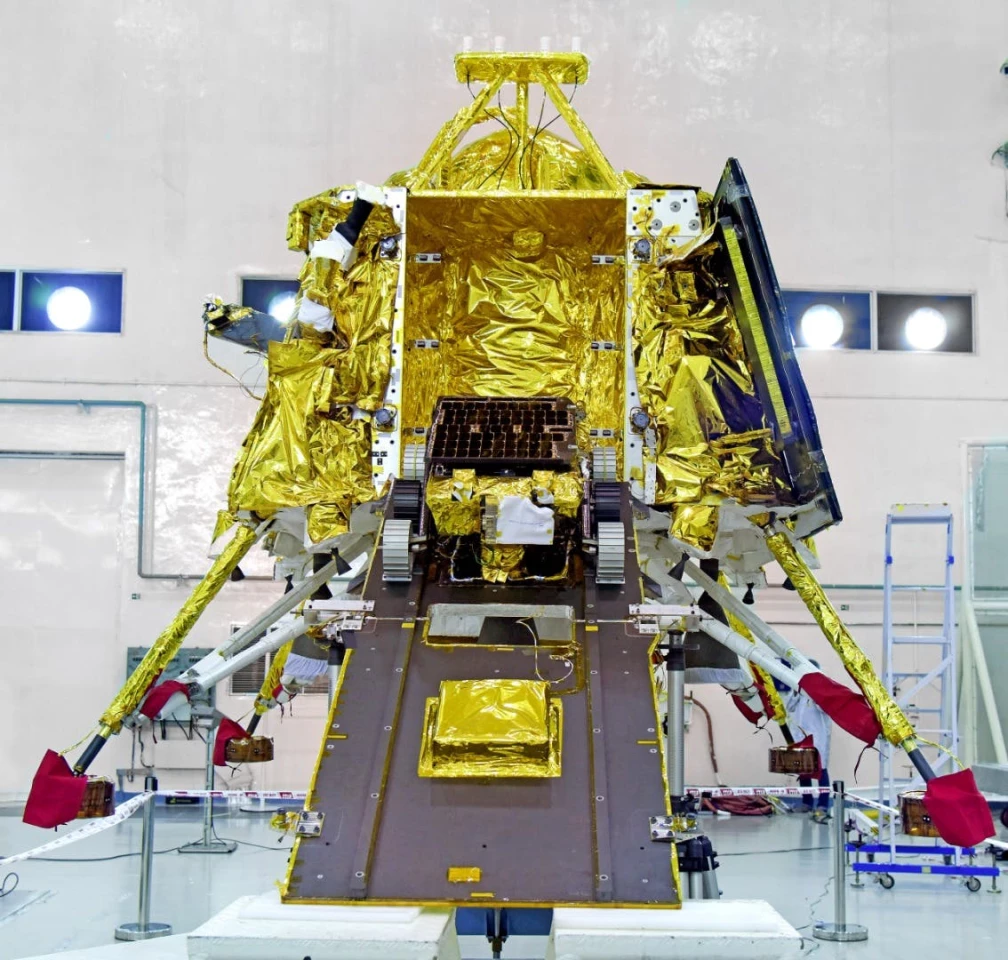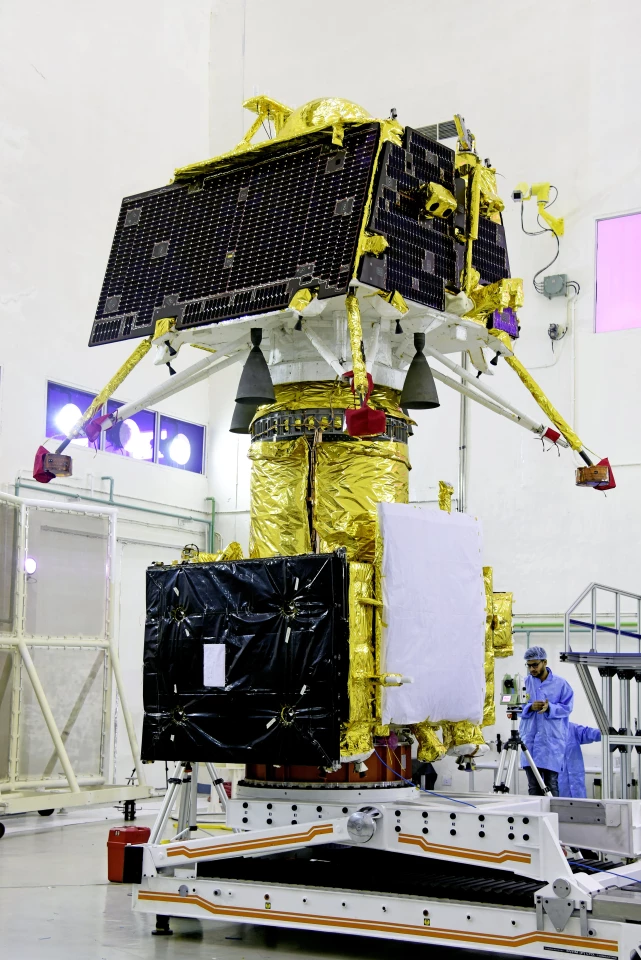India's Chandrayaan-2 spacecraft has successfully made orbit around the Moon. The ambitious mission, which is comprised of an orbiter, a lander, and a rover, has the goal of shedding new light on the creation and evolution of Earth's closest celestial neighbor.
Chandrayaan-2 launched at 2:43 pm IST on July 22 this year, atop a GSLV Mk-III rocket from the Satish Dhawan Space Centre SHAR, located in Sriharikota, India.
Following its initial insertion into a parking orbit around Earth, Chandrayaan-2 carried out a series of altitude-boosting maneuvers designed to place the robotic explorer on a transfer trajectory with the Moon.
At at 09:02 IST on August 20, following a 29-minute capture maneuver during which Chandrayaan-2's thrusters dramatically reduced its velocity, the probe finally made orbit around the Moon.
Chandrayaan-2's current orbit is highly eccentric. At its lowest point relative to the Moon, also known as the perilune, it passes a mere 114 km (71 miles) from the surface of the Moon, while at its highest point, or apolune, it is 18,072 km (11,229 miles) distant.

The spacecraft and its scientific payload will soon get to work gradually lowering and adjusting its orbit through a series of four orbital maneuvers, until it reaches a final polar orbit circularized roughly 100 km (62 miles) above the lunar surface.
From this vantage point, the solar-powered orbiter will characterize Earth's companion, collecting data on its chemical composition, the distribution of these materials, and a range of other important characteristics.
On September 2, as the probe travels around the Moon in its science orbit, the spacecraft will release the Vikram lander, which will go on to establish an orbit with a perilune of 30 km (19 miles) and an apolune of 100 km (62 miles).
Once in this orbit Vikram will undertake a series of braking maneuvers that will (hopefully) allow it to conduct a soft touchdown at the Moon's South polar region, between the craters Manzinus C and Simpelius N. The landing is currently slated to take place on September 7.

Vikram is designed to carry out in-situ experiments for one lunar day, which is the equivalent to 14 Earth days. Upon touching down on the surface, the lander will disgorge a solar-powered rover called Pragyan, which is named for the sanskrit word for "wisdom."
The six-wheeled, 27-kg (60-lb) Pragyan rover is capable of travelling 500 m (1,640 ft) across the lunar surface, and will relay data gathered from experiments conducted around the polar landing site back to Earth via the Vikram lander.







